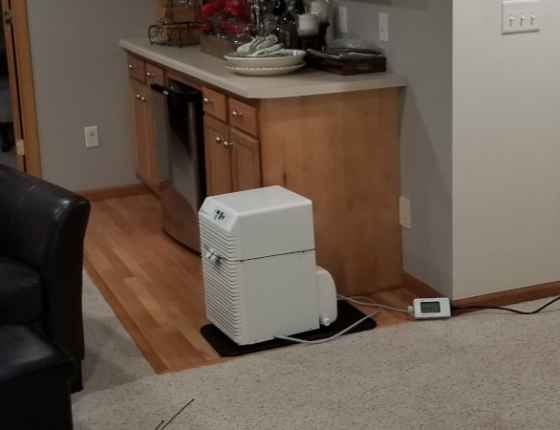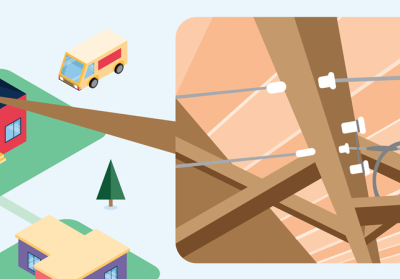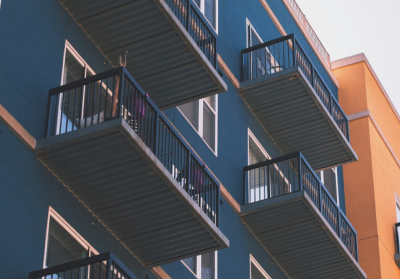Managing Indoor Humidity Levels, All Year Round
Just like we adjust our indoor air temperature based on the season, it is also important to be mindful of indoor humidity levels and to make adjustments when needed.
Indoor humidity levels are an important aspect of both comfort and air quality.
What amount of humidity is the right amount?
Some humidifiers, dehumidifiers, and whole-home humidification systems will ask you to set a humidification level. If you see this prompt, they are asking about Relative Humidity (RH), which is the percentage of moisture in the air compared to the maximum possible amount of moisture that the air can hold.
The right set point for your home can vary, and it depends on a combination of factors like the outside temperature, surface temperatures inside your home, and how well insulated and air sealed your home is. Given this variety of factors, it is important to be especially careful when you increase the humidity levels in your home. Generally speaking, homes that are well insulated and air sealed and have proper ventilation have fewer humidity issues.
Our bodies are most comfortable between 40 and 60 percent relative humidity. Avoid humidity levels above 60 percent RH in the summer to prevent mold and bacterial growth. In the winter, our homes often need a lower RH than in the summer. When it is extremely cold out, 40 percent RH may still lead to problematic condensation on windows and wall surfaces. If you are adding humid air to your home and see evidence of condensation, be sure to lower your RH levels. Learn more about managing indoor humidity in winter, below.
Use the following table as a general guide to recommended relative humidity levels in winter.
| When the Outdoor Temperature Is (deg. F): | The Relative Humidity Should Be: |
|---|---|
| 20 to 40 | < 40% |
| 10 to 20 | < 35% |
| 0 to 10 | < 30% |
| -10 to 0 | < 25% |
| -20 to -10 | < 20% |
| -20 or below | < 15% |
Avoiding mold from added humidity
When moisture condenses and sticks to surfaces like windows, and especially walls, the water can damage the building material, and mold can grow easily on these damaged surfaces. Mold growth creates unhealthy indoor air and repair work can be expensive; therefore, avoiding high humidity levels is important for both your health and the durability of your home.
Safely adding humidity and preventing condensation in winter
Most Minnesotans notice that the outside air is very dry during the winter months. This dry air makes its way into buildings and lowers the indoor humidity, resulting in everything from dry skin to shrinking of wood doors and furniture.
If your home feels dry in the winter, consider using a humidifier to add moisture to the air. This should be done carefully by only running the humidifier for short periods of time and should be set to low RH levels between 30 to 40 percent. Generally CEE’s energy auditors recommend individual humidifiers over whole-home humidifiers. Whole-home humidifiers are easy to forget about, and it is easier to rapidly add too much moisture to your home, which can easily lead to damaging moisture issues.
Higher than natural humidity levels in the winter can lead to moisture condensing on cold surfaces like windows or exterior walls. If you start to see evidence of consistent moisture build-up on your windows or walls, it means there is too much moisture to the air. It is important that you turn off your humidifier and lower your RH set point before turning it back on.
Insulation helps prevent condensation build-up
If you are not using a humidifier in the winter but still have consistent condensation, it may be because of inefficient windows or under-insulated walls. To fix this, insulate and air seal these areas.
Insulating, air sealing, and properly ventilating your home will help maintain proper humidity levels. More insulation raises surface temperatures inside your home so that moisture isn’t able to cool and condense. Air sealing and adding a ventilation system gives you the element of control necessary to maintain more consistent humidity levels throughout the year.
When your home is properly insulated and air sealed, indoor air can move freely throughout the home while outdoor air can stay out. Ventilation helps keep the indoor air balanced by removing moisture, odors, and pollutants from the air. In an improperly air sealed and insulated home, the leaks to the outside create unintended ventilation. When the home is properly air sealed and insulated, those leaks are sealed, reducing the amount of airflow between inside and outside. Ventilation helps compensate for that change, ensuring the house can "breathe." For more information on ventilation, read this article.
Additionally, these projects can help you use less energy and lower your utility bills. When CEE’s energy auditors visit homes in the winter and observe condensation build up, the solution generally revolves around properly air sealing and insulating the home. Similarly, if the home feels dry, it is an indicator that the home has a lot of air leakage and would again benefit from proper air sealing and insulation.
Decreasing humidity levels in the summer
In addition to being hot, Minnesotan summers are also very humid. That outdoor humidity naturally increases the humidity levels inside our homes too.
The most effective way to reduce humidity is to use air conditioning. Air conditioners are effective because of their ability to remove moisture from the air in addition to lowering the temperature.
Humid basements in the summer
While air conditioners do a lot to make above-ground living spaces comfortable and less humid, dehumidifiers may offer additional help in the basement. Humid weather can make the air in the basement feel stale and smell damp due to the cooler basement temperatures and high humidity levels. Most dehumidifier models need to have their water container emptied periodically or piped directly to a drain.
A basement dehumidifier should be set to 50 percent RH to prevent bacterial growth, if it is still too damp feeling, lower the RH level.
If you are shopping for a new dehumidifier, purchase one that is ENERGY STAR® rated and has an Energy Factor (efficiency rating) of at least 2.0. The higher the EF rating, the more efficient the appliance will be.
Outside Resources
| Minnesota Department of Health Mold and Moisture This website from the Department of Health offers information on mold and moisture, their impacts on health, and how to find and address problems. | Field Study Of Standalone Dehumidification Efficiency Opportunities A CEE field study looks into managing basement humidity levels efficiently. |
| ENERGY STAR® Rated Dehumidifiers When you buy a dehumidifier, make sure it's ENERGY STAR rated to ensure the best efficiency and operation. | Energy Vanguard — Two Rules For Preventing Humidity Damage A blog that covers more details on dealing with moisture and humidity in your home. |

Questions about your home energy? Let's talk!



